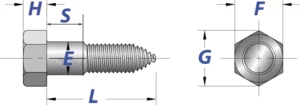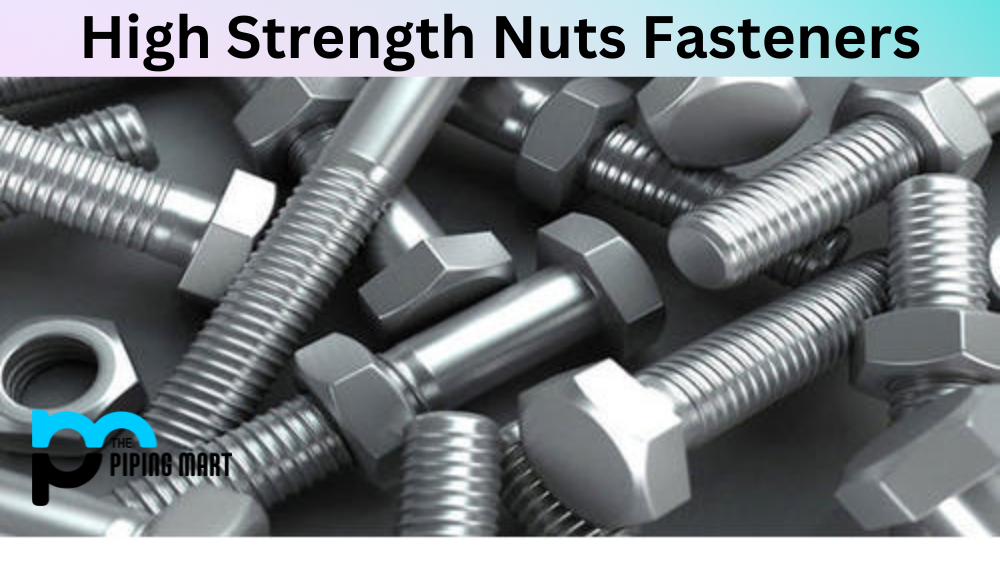A lag bolt, also known as a lag screw, is an extremely strong and versatile fastener. It looks like a large wood screw and is used to connect two pieces of material securely. Lag bolts are commonly found in carpentry projects such as deck building, framing, etc. But what makes them so reliable, and why should you use them for your next DIY project? Let’s find out!
Anatomy of a Lag Bolt
A lag bolt comprises three main parts—the head, the shank, and the threading. The head of the bolt is usually hexagonal or square so that it can be driven with a wrench or ratchet. The shank is the portion of the bolt where the threads start; this part is tapered to make it easier to drive into wood. Finally, the threading helps provide friction between the two materials being connected; this increases its strength and prevents slipping or loosening over time.
Lag Bolt Uses
Lag bolts are most commonly used in carpentry projects such as decks and outdoor structures like sheds or playhouses. They are also often used for attaching metal components to wood surfaces. However, they are not limited to just these applications; they can be used in any application that requires strong connections between two materials. This includes furniture repair projects, automotive repairs (such as securing body panels), and even concrete installations (such as wall anchors).
Advantages of Lag Bolts
Lag bolts offer several advantages over other fasteners, such as screws or nails. They create stronger connections than screws because their larger size provides more surface area for gripping onto material surfaces. Additionally, their tapered shanks make them easier to drive into wood compared to other fasteners; this makes them ideal for quickly assembling large structures without compromising strength and durability. Lastly, their galvanized finish helps protect them from corrosion caused by moisture exposure over time which further extends their lifespan.
Lag Bolt Properties
- Lag bolts are large, heavy-duty screws that secure lumber and other materials.
- Lag bolts have a tapered, cone-shaped head that helps to prevent them from slipping out of the hole.
- The threads on lag bolts are very coarse, which helps to ensure a tight grip.
- Lag bolts are made from high-strength steel, which makes them very durable.
- Lag bolts can be difficult to remove once they have been installed, so it is important to make sure that they are installed the first time correctly.
Lag Bolt Dimensions
| Hex Lag Bolt : Dimensions (ASME B18.2.1-1996) | |||||||||||||
|---|---|---|---|---|---|---|---|---|---|---|---|---|---|
| Basic Product Diameter
|
Threads Per Inch | Body or Shoulder Diameter (E) | Width Across Flats (F) | Width Across Corners (G) | Head Height (H) | Shoulder Length (S) | |||||||
| Max | Min | Basic | Max | Min | Max | Min | Basic | Max | Min | Min | |||
| #10 | .1900 | 11 | .199 | .178 | 9/32 | .281 | .271 | .323 | .309 | 1/8 | .140 | .110 | .094 |
| 1/4 | .2500 | 10 | .260 | .237 | 7/16 | .438 | .425 | .505 | .484 | 11/64 | .188 | .150 | .094 |
| 5/16 | .3125 | 9 | .324 | .298 | 1/2 | .500 | .484 | .577 | .552 | 7/32 | .235 | .195 | .125 |
| 3/8 | .3750 | 7 | .388 | .360 | 9/16 | .562 | .544 | .650 | .620 | 1/4 | .268 | .226 | .125 |
| 7/16 | .4375 | 7 | .452 | .421 | 5/8 | .625 | .603 | .722 | .687 | 19/64 | .316 | .272 | .156 |
| 1/2 | .5000 | 6 | .515 | .482 | 3/4 | .750 | .725 | .866 | .826 | 11/32 | .364 | .302 | .156 |
| 5/8 | .6250 | 5 | .642 | .605 | 15/16 | .938 | .906 | 1.083 | 1.033 | 27/64 | .444 | .378 | .312 |
| 3/4 | .7500 | 4-1/2 | .768 | .729 | 1-1/8 | 1.125 | 1.088 | 1.299 | 1.240 | 1/2 | .524 | .455 | .375 |
| 7/8 | .8750 | 4 | .895 | .852 | 1-5/16 | 1.312 | 1.269 | 1.516 | 1.447 | 37/64 | .604 | .531 | .375 |
Conclusion:

A passionate metal industry expert and blogger. With over 5 years of experience in the field, Palak brings a wealth of knowledge and insight to her writing. Whether discussing the latest trends in the metal industry or sharing tips, she is dedicated to helping others succeed in the metal industry.





